Itâs time we embrace spider season (or at least make peace with it)
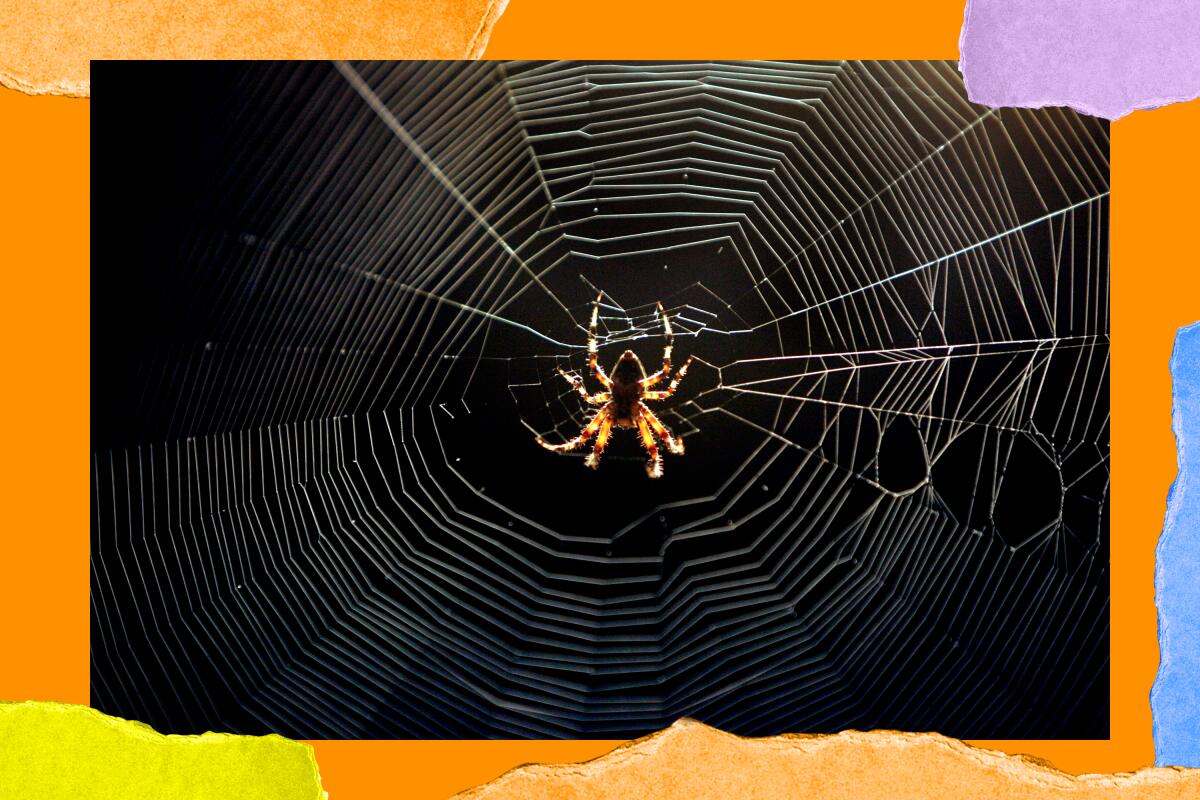
Tell me if this sounds familiar: You wake up early and want to get a bit of fresh air. Maybe you want to take your morning coffee to your porch and think about your fun fall plans. So you grab your warm mug, a cozy bathrobe (no? just me?) and open your front door to step outside ⌠and walk face-first into a huge spiderweb.
Yes, dear reader, itâs officially spider season. [Cue lightning flash, thunder sound effect, wolf howl in background.]
OK, I know a lot of people get the creepy crawlies around our eight-legged friends, but in reality, thereâs not much to be afraid of regarding spiders right now. âThis is the time of year to see orb weaver spiders, and they are often out and about spinning their webs at night,â said Lila Higgins, co-senior manager of community science at the Natural History Museum of Los Angeles County. âThe reason we tend to see them more is they have grown bigger over the season, so are much more conspicuous in their web-building behavior.â
Orb weavers may be the spiders you run into most frequently (sometimes literally), but theyâre far from the only arachnids active right now. Higgins notes the venomous brown widow has been the most observed spider in Los Angeles County on the community science platform iNaturalist since Sept. 1, although there are also a few species of jumping spiders on the rankings as well.
I can attest from personal experience that jumping spiders are terrific ambassadors for arachnophobes. Theyâre quick, theyâre clever, and some are even downright cute. One time, when I was weeding my native garden, I spotted one stalking a housefly on the rim of a potted Baja fairy duster. It followed the fly and sat nearly motionless for a few minutes. Then, with no warning, the spider leapt maybe 20 times its body length in a split second â so fast my eye couldnât even register the motion â and landed directly on the fly that would become its next meal. That was one fewer pest I needed to shoo out of my kitchen.
Another spider friend we may run into often this time of year is the tarantula. Its mating season is in late summer and early fall, and lucky hikers have a good shot at spotting the males trekking on broad trails and dirt roads around sunset. Griffith Park seems to have a good number, considering both the ones Iâve seen in person and the screams I hear (mostly from out-of-town tourists).
If you do happen to spot a tarantula on your hike, Higgins suggests an alternative reaction: First, know youâre super lucky to be able to see this awesome spider behavior. Second, give the tarantula enough space âso it can keep going about its tarantula business.â And third, if you have a phone, snap a photo from a distance and upload it to iNaturalist. That way, your observation can help scientists doing research.
And the next time you stumble into an orb weaver on your way out the front door, try to appreciate the moment. And perhaps be thankful it isnât something bigger.
4 things to do
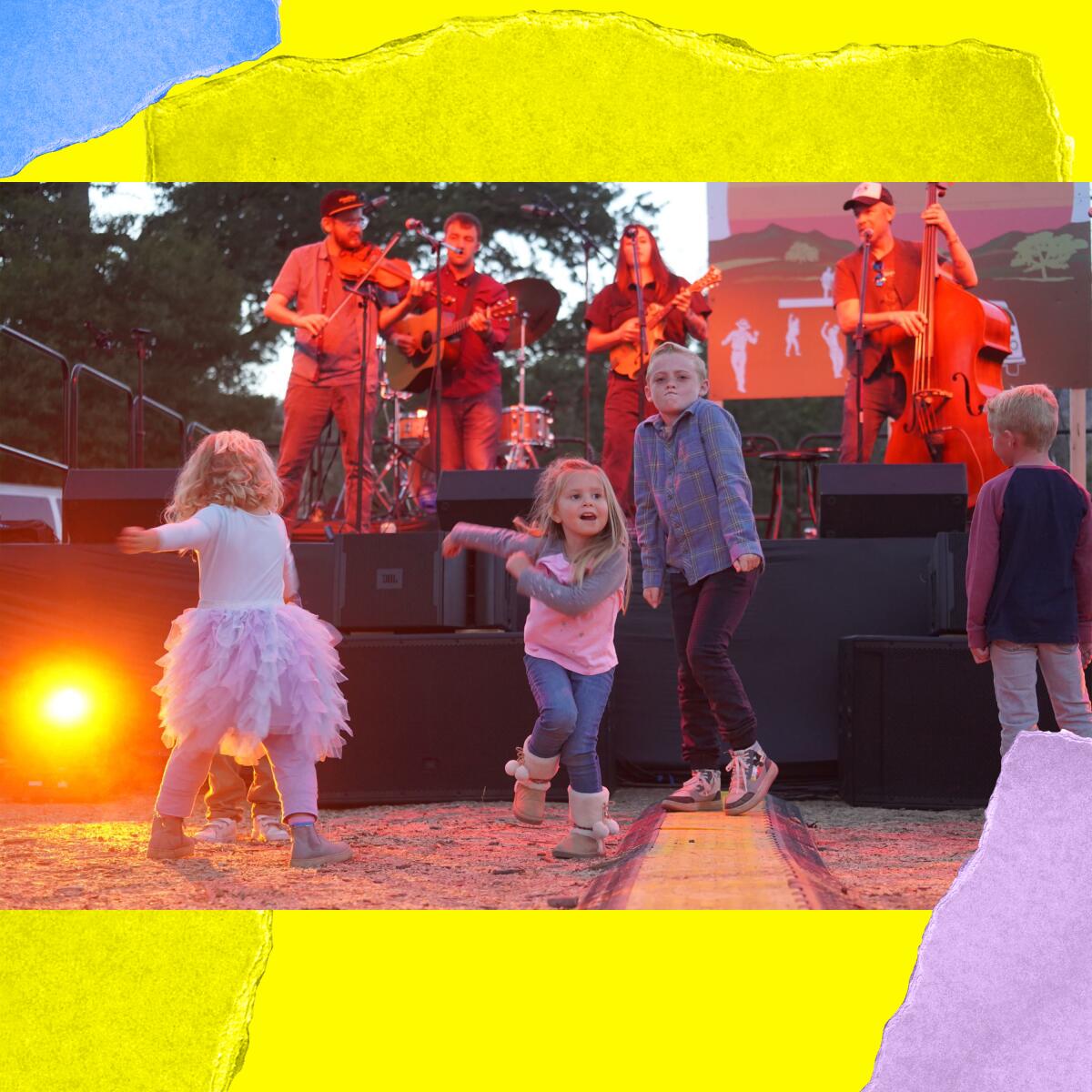
1. Dance for ranch restoration. The 2018 Woolsey fire did a number on the Santa Monica Mountains, and many beloved places were damaged or lost. Few were harder hit than Paramount Ranch, the only National Park Service site dedicated to telling the story of moviemaking in America. We may have lost the towering valley oak known as the Witness Tree forever, but efforts are underway to rebuild the iconic western town. Chip in by buying tickets for Saturdayâs Paramount Ranch Sonic Boom, a music festival hosted by Dustbowl Revival and presented by Tiny Porch Concerts. Doors open at 11 a.m., and bands will be playing all day long. General admission is $45 and includes parking.
Get The Wild newsletter.
The essential weekly guide to enjoying the outdoors in Southern California. Insider tips on the best of our beaches, trails, parks, deserts, forests and mountains.
You may occasionally receive promotional content from the Los Angeles Times.

2. Get comfortable with bike grease. Bikes are wonderful, simple machines â and with the ability to convert nearly 90% of effort into forward movement, theyâre also one of the most efficient ways to get from Point A to Point B. But, oh, man, the first time your chain comes loose or your tire pops a leak can be a little panic-inducing. No worries â head down to Los Angeles State Historic Park for Bike Day on Sunday for lessons on maintenance and safety, how to join a bike commuting group and to check out a Bike Rodeo. Itâs free from 2 to 5 p.m.

3. Welcome a tall ship to Santa Barbara. You know, when I moved to L.A. from Connecticut, I took a cheap flight on Southwest. The 110-foot, two-masted tall ship Mystic Whaler had a much more interesting journey getting to Santa Barbara, where it will join the Santa Barbara Maritime Museum and be a central part of adventure-inspired STEM learning in the future. Join the shipâs captain and the director of Central Coast Ocean Adventures on Oct. 20 for a lecture on the vesselâs voyage to California and its future. Register here. The cost is $20 for members of the public.
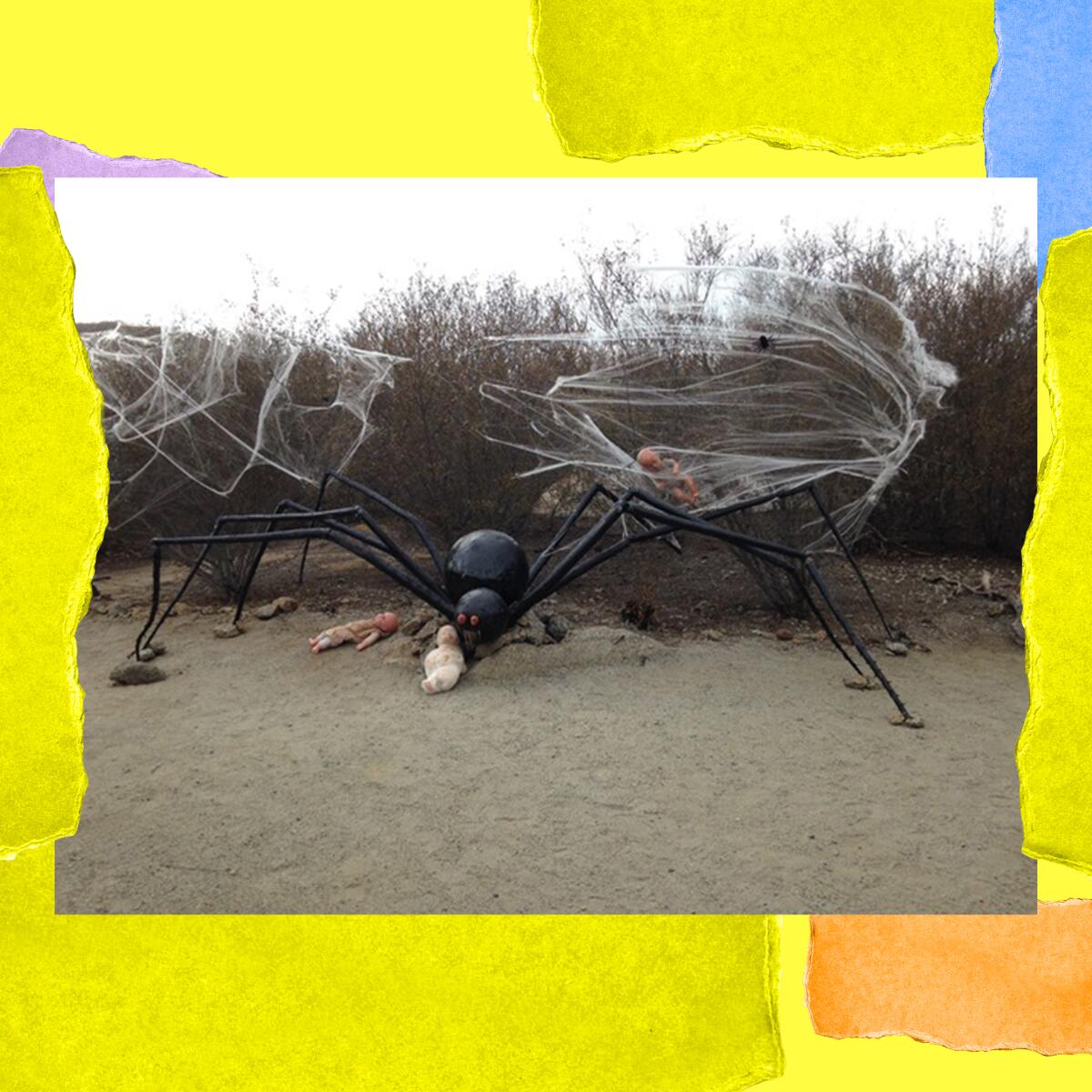
4. Go straight to Hell(hole Canyon County Preserve) for Halloween. Lots of parks are getting a little creepy this time of year, and San Diego Countyâs Hellhole Canyon County Preserve is no exception. The popular outdoor area is hosting a full evening of frightening fun, including a costume contest, a live birds of prey demo, a Spooky Trails outdoor haunt, a pumpkin giveaway, a stargazing party and even a (nonscary) movie screening. The fun starts at 4 p.m. Saturday and itâs free. RSVP and get more info on the Friends of Hellhole Canyon Open Space Preserve Facebook page.
In L.A. County, the San Dimas Canyon Nature Center is holding a similar event from 3 to 6 p.m., where they will also be releasing great horned owls into the wild. This event is also free, although donations are accepted and will go toward animal care at the center.
The must read

Itâs not easy being green. These days, more and more people are keeping green values in mind when they think about home renovations and new construction. But whether youâre looking at installing a heat pump, solar panels, a gray water system or even a composting system, government agencies can sometimes lag in the approval process. The New York Times has a fascinating profile on David Lee Hoffman, who has built his own eco-friendly house in tony Marin County without permits, permission or approval and has spent decades fighting the county because of it. This is not a black-and-white story â Hoffman comes off as prickly and sometimes unnecessarily combative, and the county raises some legitimate concerns.
Check out âThe Timesâ podcast for essential news and more.
These days, waking up to current events can be, well, daunting. If youâre seeking a more balanced news diet, âThe Timesâ podcast is for you. Gustavo Arellano, along with a diverse set of reporters from the award-winning L.A. Times newsroom, delivers the most interesting stories from the Los Angeles Times every Monday, Wednesday and Friday. Listen and subscribe wherever you get your podcasts.
Cool stuff
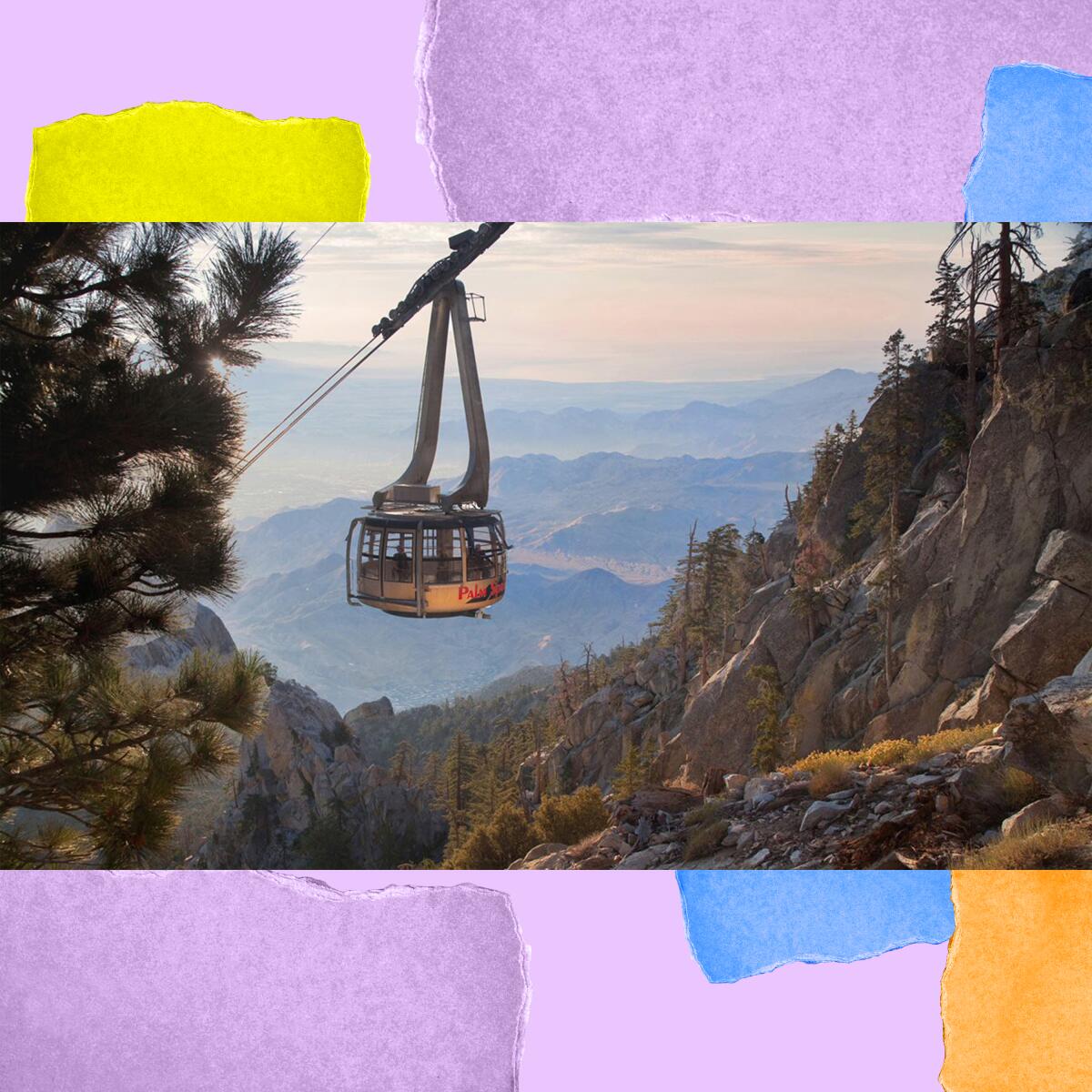
If you have been blessed with the powers of winter precipitation prescience, then you should know that, in addition to your prognostication powers, you may also be able to win free rides on the Palm Springs Aerial Tramway. The Tramwayâs annual snow guessing contest has begun, and if you name the date Mt. San Jacinto receives its first inch of winter snow, you can win four tram admissions and a special tram memento. Full contest rules are here. You have to send your guess in on a postcard.
Five questions with ...

Lila Higgins, co-senior manager of community science at the Natural History Museum of Los Angeles County.
These answers have been edited for length.
What inspired your career?
I grew up in the countryside in the U.K. and got to play in fields, streams, hedgerows and hollow trees. I used to pretend to be a badger, talk to my local snails and often followed butterflies to see where they lived. This led to undergraduate studies in entomology and a grad degree in environmental education.
What struck you about the landscape when you first came to L.A.?
The human-built landscape was so different â so many freeways, the roads were all so straight and the houses were all similar like a row of boxes. And the living landscape â giant mountains just up the street from my house in Upland, with a mountain forest that was covered in snow in the winters. It was much less flat and much less green than the landscape Iâd grown up in.
Why are spiders important?
I sort of hate this question. What if we reversed it and asked why are humans important? Spiders are no more and no less important comparative to humans.
For the folks who care about how spiders benefit us: If spiders werenât here, weâd be overrun by pests, and the food web would be disrupted, leading to potential agricultural collapse and major ecological disturbance. We certainly would experience famine and likely wouldnât be here to debate how important spiders are.
Do you have a favorite spider?
If Iâm forced to pick just one, Iâd have to say that right now my favorite spider is the California trapdoor spider. I donât often get to see trapdoor spiders, as they are very secretive beings, and their habitat is pretty specific to undisturbed hillsides. One year, after some heavy rains, some friends found one in their kitchen in Glassell Park. They captured it under a glass and texted me a picture.âŻI was able to advise them on how to return the spider outside and also add the observation to iNaturalist.
If folks want to learn more about spiders, where should they go?
This is Spider Pavilion season at the museum, so come and visit now through Nov. 27. Also, this book is my favorite spider field guide.
P.S.
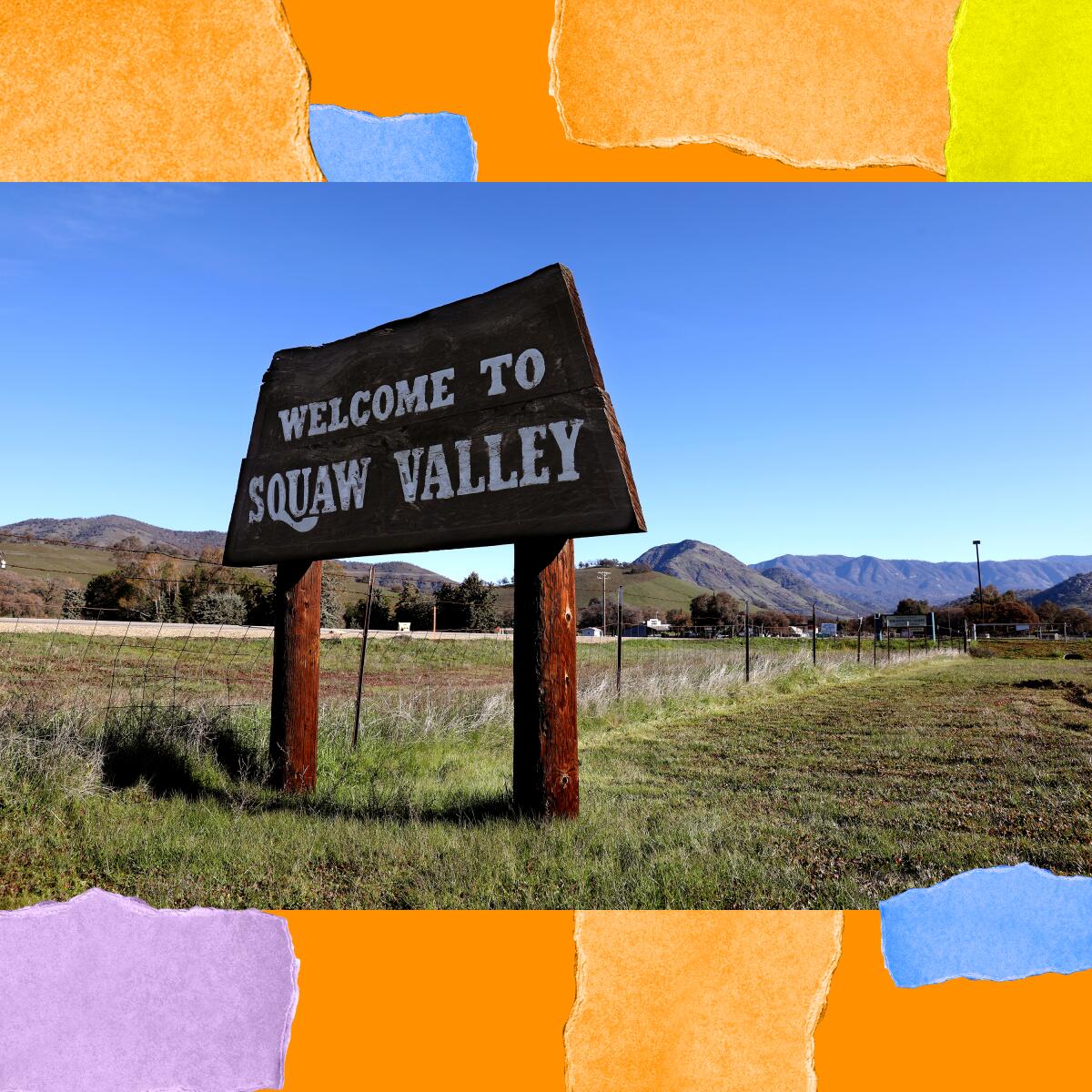
Just before Indigenous Peoples Day, Secretary of the Interior Deb Haaland (the first Indigenous person to lead a Cabinet agency), announced that nearly 650 geographical features across the country would be renamed to remove the word âsquaw,â which is widely considered an offensive term. You can see just how widespread this slur was on an interactive map â there are more than a dozen spots in Southern California alone. Many sites have been renamed with their Indigenous place names or in honor of Indigenous people.
In other very welcome news, the Tongva â Los Angelesâ first people â are now once again landowners in the county after a parcel of Altadena land in the San Gabriel foothills was transferred to the tribe. Itâs the first time the Tongva have held legal rights to their ancestral land since 1833.
For more insider tips on Southern Californiaâs beaches, trails and parks, check out past editions of The Wild. And to view this newsletter in your browser, click here.
Sign up for The Wild
Weâll help you find the best places to hike, bike and run, as well as the perfect silent spots for meditation and yoga.
You may occasionally receive promotional content from the Los Angeles Times.




